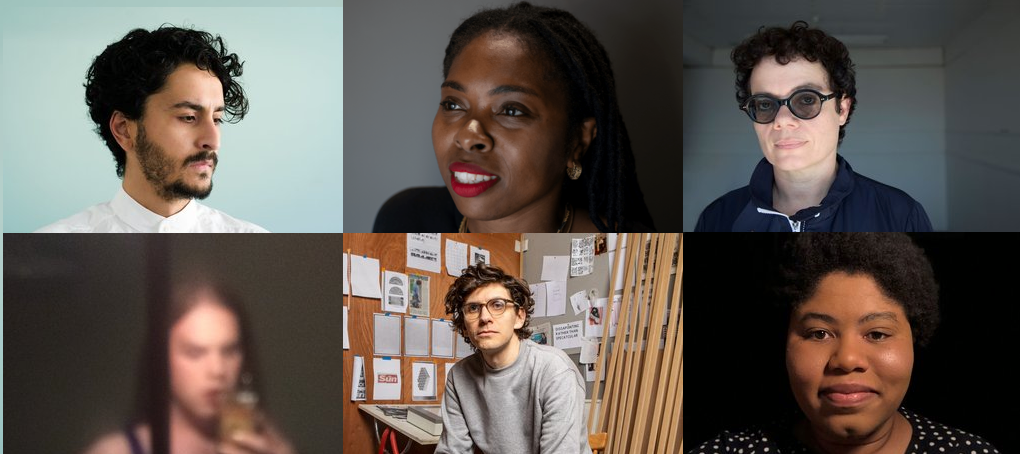
The 10 artists who will each be given £10,000 (about $12,500) grants in lieu of the Turner Prize this year (which was officially cancelled in May because it would have been logistically impossible to stage) have been named by Tate Britain.
They are Liz Johnson Artur, Oreet Ashery, Shawanda Corbett, Jamie Crewe, Sean Edwards, Sidsel Meineche Hansen, Ima Abasi-Okon, Imran Perretta, Alberta Whittle, and the political art collective Arika.
“Following a lively and rigorous virtual debate, the jury has settled on a list of 10 fantastic artists who reflect the exceptional talent found in contemporary British art,” Alex Farquharson, Tate Britain’s director, told the London Evening Standard.
“From ceramics to film, performance to photography, they represent the many exciting and interdisciplinary ways that artists work today. These bursaries represent a vote of confidence in that work and offer some much-deserved support in challenging times.”
This year’s honorees will continue to be eligible for the Turner Prize in the future. They were selected based on their “significant contributions” to contemporary art over the past year.
A worker clearing the steps at Tate Britain in London. Photo by Peter Macdiarmid/Getty Images.
Normally, four artists are short-listed for the prize in May and invited to stage exhibitions at the museum in the fall, with the winner announced in December. The £45,000 ($55,413) pot is usually split between the winner, who gets £25,000 ($30,777), and three finalists who receive £5,000 ($6,160) each. The additional funding for the expanded purse this year was provided by John Booth, Catherine Petitgas, and the Ampersand Foundation.
This is the second year in a row that the prize has not gone as expected. Last year, in a surprise twist, the award went to all four finalists.
The 2020 jury, chaired by Farquharson, featured Richard Birkett, curator-at-large at the Institute of Contemporary Arts in London; Sarah Munro, director of the Baltic Centre for Contemporary Art in Gateshead, UK; designer and curator Duro Olowu; and Fatoş Üstek, director of the Liverpool Biennial.
Their task was easier than in a normal year, Farquharson told the Guardian.
“Usually that extra step of getting down from 10 to four is quite time-consuming and the most painful because you are dealing with artists whose work the jury feels the strongest allegiance to.”
Here’s a look at the 10 artists.
Arika
boychild, Untitled Hand Dance, at Arika’s “Episode 10: A Means Without End,” Tramway, Glasgow 2019. Photo by Barry Esson.
Arika, a political arts organization that uses art for social change, was selected by the jury for their five-day program “Episode 10: A Means Without End,” which included performances, discussions, screenings, and other events at Tramway in Glasgow.
Liz Johnson Artur
“Liz Johnson Artur: If you know the beginning, the end is no trouble” at the South London Gallery, 2019. Photo by Andy Stagg.
A Ghanaian-Russian photographer, Artur has documented people of the African diaspora for 30 years in her project, Black Balloon Archive. The jury recognized the work’s presentation at the South London Gallery.
Oreet Ashery
Oreet Ashery, Revisiting Genesis (2016) at “Misbehaving Bodies: Jo Spence and Oreet Ashery” at the Wellcome Collection, London, 2019. Photo courtesy of the artist and the Wellcome Collection, London.
“Misbehaving Bodies: Jo Spence and Oreet Ashery” at the Wellcome Collection in London attracted the jury’s notice for including the film Dying Under Your Eyes and the web series Revisiting Genesis, about nurses preparing their patients for death.
Shawanda Corbett
Shawanda Corbett, Neighbourhood Garden. Photo by Marcus Leith courtesy of the Artistand Corvi-Mora, London.
In her jury-praised performance Blackbird Mississippi at the Serpentine Gallery in London, Corbett, a ceramic artist who bases her vessels on people, referenced journeys out of slavery on the Underground Railroad as well as her own personal history of rehabilitation.
Jamie Crewe
Jamie Crewe, The Ideal Bar” – “Le Narcisse” – “Alec’s (2020), still. Photo courtesy of the artist.
Selected based on a pair of exhibitions at Grand Union in Birmingham and the Humber Street Gallery in Hull, Crewe harnesses the power of video, sculpture, drawing, and text to share LGTBQ+ histories and consider issues of power and identity.
Sean Edwards
Sean Edwards, Undo Things Done (Wales in Venice) 2019. Photo by Jamie Woodley, courtesy of the artist and Tanya Leighton gallery, Berlin.
Edwards caught the jury’s attention with his sculptural installation Undo Things Done for the Welsh Pavilion, featuring video and audio works inspired by his childhood, for the Welsh Pavilion at the 2019 Venice Biennale.
Sidsel Meineche Hansen
Sidsel Meineche Hansen, End-Used City (2019). Installation view “Sidsel Meineche Hansen: Welcome to End-Used City” at Chisenhale Gallery, London, 2019. Photo by Andy Keate.
Technology and capitalism were the focus of “Sidsel Meineche Hansen: Welcome to End-Used City” at Chisenhale Gallery, which was praised by the jury for its innovative use of VR and AR in highlighting the role that robots and the human body play in the workforce today.
Ima Abasi-Okon
“Ima-Abasi Okon – Infinite Slippage: nonRepugnant Insolvencies T!-a!-r!-r!-y!-i!-n!-g! as Hand Claps of M’s Hard’Loved’Flesh [I’M irreducibly-undone because] —Quantum Leanage-Complex-Dub” installation view at Chisenhale Gallery, London, 2019. Photo by Andy Keate.
Imran Perretta
Imran Perretta, the destructors (2019), installation view at Chisenhale Gallery, 2020. Photo by Andy Keate.
Selected based on his film the destructors (2019), about young Muslim men from South Asian background coming of age in London, Perretta works in poetry, film, sound, and performance art.
Alberta Whittle
“Alberta Whittle: How Flexible Can We Make the Mouth” installation view at Dundee Contemporary Arts, Scotland, 2019. Photo by Ruth Clark.
Working across performance, video, photography, collage, and sculpture, Whittle was picked by the jury based on her solo show “How Flexible Can We Make the Mouth“ at Dundee Contemporary Arts, Scotland.